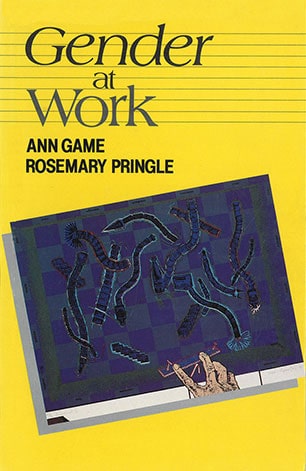
The occupational health and safety (OHS) profession is being affected by demographic changes as much as any other profession. Younger people seem to have a very different expectation on how to interpret and apply OHS, and older people are tired of being lectured to, and this is putting pressure on those who organise events, seminars and conferences and those who mentor and educate in a range of ways.
Some organisations and conferences are responding by reconfiguring the provision of information away from the lecture format of an expert to a mix of communication methods. This blog has written about some of those that occurred in the last two years. These conferences are less academic than in earlier days. Rarely is a conference accompanied by a handbook of research-based conference papers; some provide no papers at all and slideshows delivered a fortnight after the event are devoid of context and next to useless.
If the best way to implement health and safety changes is through a multidisciplinary approach, surely conferences and seminars must also be multidisciplinary. An OHS conference that includes occupational hygiene, ergonomics and other sub-disciplines is not multi-disciplinary. When was the last time that you attended a conference that included health and safety experts from both the OHS and Human Resources disciplines? If we are to develop informed, rounded safety professionals and to implement research into practice, surely, we have to provide the mix of knowledge that our professionals need to apply in real world circumstances.
The HR and OHS combination is one area that needs attention but OHS and its conferences need to be even more multidisciplinary. Here is a list of subject matter experts that I want to hear from (Safety includes Health and Wellbeing):
- Safety Economist
- Safety Philosopher
- Safety Ethicist
- Safety Entrepreneur
- Safety Gender researcher
Some of these already exist but rarely get an invitation, partly because OHS is obsessed with Safety Leadership. I refuse to attend another conference that invites a speaker who has been to the Antarctic, or survived a similar extreme experience, and seems to think that this insight helps manage health and safety in a small factory in an outer-suburban industrial estate. Too often conferences purchase someone from a Speaker’s Bureau who have the keyword “Leadership” in their listing. Instead we should be looking for the keyword of “Workplace Safety”. But speakers in this category are not offered. We should ask why this is.
The absence of those specialists listed above is a problem but one that is solvable. If these people do not exist, we should be encouraging people to enter these areas of study. Some OHS organisations offer grants for OHS research but much of this research remains within the narrow OHS interpretation. Grants and other encouragement should be offered to non-OHS disciplines.
Imagine if OHS supported an analysis of the economics of OHS. Does OHS save a company any money, really? We think it does, but we are not sure. We should know by now.
Imagine if OHS developed a philosopher who was equally knowledgeable in OHS as they were in Socrates, Aristotle, de Botton, and others. Preserving life and health has a moral foundation but does OHS reinforce this morality or weaken it?

Imagine if OHS was able to identify how the level of risk varies in relation to the sex and gender of the worker or the demographics of a workplace or of a company. Gender is a neutral term that includes male, female and others. Does gender affect how OHS is interpreted and how it is implemented? The gender context of Australian workplaces was closely examined in 1984 by Anne Game and Rosemary Pringle but there is a desperate need for an update for this century.
Part of the persistence of old models of information sharing is that the OHS profession quite often focuses too much on itself rather than on the issue that it was intended to address. The focus of this blog is on workplace safety in its broadest sense. The OHS profession needs to look beyond its membership to what the members do, what values they apply and whether the advice furthers Safety or just safety management. Provan’s research on safety clutter and Gregory Smith’s Paper Safe are indications of some self-analysis by the safety profession, but the OHS profession would benefit from being challenged on its own ethics, its philosophy, its gender structure, and its economic assumptions.
Such challenges may generate heated debate, arguments, bruised egos, embarrassment, uncertainty and disruption but re-evaluation of core beliefs and values usually leads to improvement and OHS professes to be about continuous improvement. Continuous improvement should lead to enlightenment, but this only comes from an expansive view of the world of work, and an expansive view needs to be worked on.

Kev, another good article. And in this, you’ve asked a brilliant question and one my work colleagues and I have tossed around the pitch more than a few times, lately: “Does OHS save a company any money?” (We think it does, but we are not sure. We should know by now.) I think you’re spot on about that – pretty much everyone I know who works, or has worked, in the profession would conclude what we do saves money. But, I cannot recall seeing any analysis that backs that up. Also, I’d probably readily scoff at the concept if I was on the outside, looking in. So, perhaps this could be a subject for one of your articles – surely there’s enough people on your blog who could chime-in with thoughts about this. And we know people, who know people, (etc, etc), which could all contribute to the discussion.
I’ve recently found myself working closely with a colleague who’s actively involved in pre-emptive OHS management, but seems to, by necessity, spend more time in the (reactive and reactionary) workplace rehabilitation and return-to-work space. Both of us have discussed the issue of ‘how does OHS save money?’ (If it does at all). In his case, I’ve suggested one way she could show the cost of poor OHS would be to track the time she is spending on each case (if need be, break this down to 6-minutes increments, just like a lawyer does). Then, through a quasi-invoicing system specifically slant that time directly against the organisational department from where the injured/ill employee works for. While I strongly suspect there’s absolutely nothing novel in that approach, it’d provide one means of demonstrating to the ‘responsible’ department (i.e. the department that injured / hurt their employee) one element of the cost of injuring / hurting their employees. Of course, if said employee is absent from work because of the injury, then there’s (probably) the cost of back-filling their role (etc, etc). So all those things can be added as contributors to the literal cost of the incident – if accurately tracked. Build up that cost profile over time (e.g. two years) to arrive at a reasonably accurate assessment of how much an injury can literally co$t a business.
But, how to show how OHS could save money? It’s the flip side of what I’ve penned above. Preaching to the choir here, but in our profession we pay attention to those things that can hurt and maim people; we help manage the risk associated with those things (and, track the cost of what we’re doing to help mitigate that risk). Ideally, over time, more focus on OHS shows incident numbers falling (or, at least it should. Why else would we do it?) Eventually, we can demonstrate that the number of incidents has dropped below the cost of arriving at that juncture – from that point onwards, we’re saving money.
I’ll be honest – I’ve never done what I’m suggesting above, nor have I ever heard of it being done. And, I readily admit that my logic is rough, and the strategic outline rougher still. But, perhaps it provides a basic model of how an answer to your question could be deduced. Also, if plenty of participants chimed in to this, tracking costs over (say) two years, over that time we’d generate some reasonable data to support an answer to the question: “Does OHS save a company any money?”
You’re correct. We should know the answer to that by now. The fact we don’t is telling.
and experience in workplaces-preferably as a HSR
Great commentary.
I agree wholeheartedly.
The other gain for safety in involvement of scholar / practitioners from other disciplines, is that safety becomes part of a wider debate instead of safety experts just talking to each other.
Thank you again for excellent blog
Di kelly
Thanks Dianne. There is an opportunity for a new type of multi-disciplinary OHS symposium (Perth got closer to it last year) but it should start small as the conference marketers would struggle ti market across disciplines. If you were in Melbourne I would book out one of those free function rooms in an inner-city pub and invite you along.
I can see it now “The Great OHS Pub Crawl” . 🙂